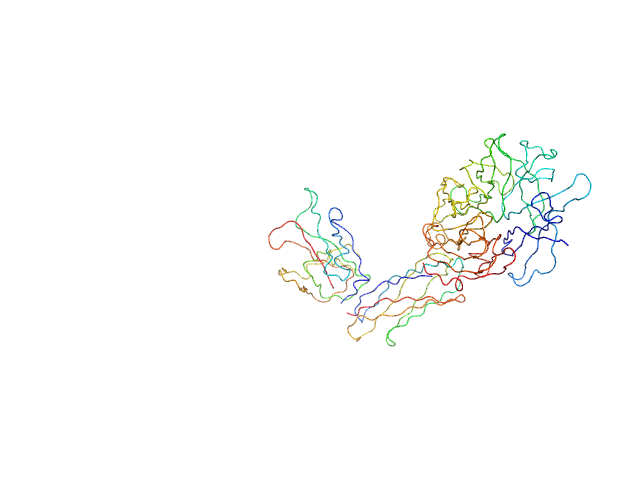| MWexperimental | 100 | kDa |
| MWexpected | 121 | kDa |
| VPorod | 173 | nm3 |
|
log I(s)
3.62×102
3.62×101
3.62×100
3.62×10-1
|
 s, nm-1
s, nm-1
|
|
|
|

|
|

|
|
Synchrotron SAXS
data from solutions of
Homodimeric state of soluble endoglin receptor
in
10 mM Tris–HCl, 50 mM NaCl, pH 8
were collected
on the
EMBL X33 beam line
at the DORIS III, DESY storage ring
(Hamburg, Germany)
using a MAR 345 Image Plate detector
at a sample-detector distance of 2.7 m and
at a wavelength of λ = 0.15 nm
(I(s) vs s, where s = 4πsinθ/λ, and 2θ is the scattering angle).
Solute concentrations ranging between 0.5 and 5 mg/ml were measured
at 25°C.
Two successive
120 second frames were collected.
The data were normalized to the intensity of the transmitted beam and radially averaged; the scattering of the solvent-blank was subtracted.
The low angle data collected at lower concentration were merged with the highest concentration high angle data to yield the final composite scattering curve.
Tags:
X33
|
|
|||||||||||||||||||||||||||